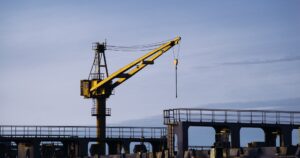Introduction:
The construction of a new shipyard is an impressive and vital undertaking that shapes the maritime industry’s future. Shipyards are the lifeblood of any marine nation, facilitating the construction, repair, and maintenance of vessels that traverse the world’s oceans. We ar excited to report that we are embarking on the construction of a new shipyard for our company. We’ve partnered with several repuitable contractors to help us in this new endeavor, including architects from New York City, general contractors from Florida, and a reputable metal buildings company from Springfield MO. We look forward to sharing the news of this new undertaking with our followers as the company grows and is able to construct bigger and more powerful ships for our navy.
Why new shipyard construction is important:
New shipyard construction is important for several reasons, and it plays a critical role in supporting a country’s maritime and naval capabilities and economic and industrial development. Here are some key reasons why new shipyard construction is important:
Naval and Maritime Power:
Shipyards are essential for building and maintaining naval vessels, including warships, submarines, and other maritime assets. A strong navy is crucial for national defense and protecting a country’s interests at sea.
National Security:
Shipyards are vital for maintaining a nation’s maritime security and sovereignty. They enable the construction, repair, and maintenance of naval vessels, ensuring readiness and the ability to respond to security threats.
Maintenance and Repairs:
Shipyards are crucial for the maintenance and repair of existing vessels. This helps extend the operational lifespan of naval and commercial ships, reducing the need for new construction.
Job Creation:
Shipyard construction and operations generate many job opportunities, from shipbuilders and engineers to support staff. This helps reduce unemployment and provides stable employment in various communities.
National Pride:
Having a robust shipbuilding industry and modern shipyards can be a source of national pride. It symbolizes a country’s capability to design, build, and maintain advanced vessels and can boost a nation’s self-esteem and international standing.
Economic Growth:
Shipyard construction and operations create jobs and stimulate economic growth. Shipbuilding requires skilled labor, materials, and infrastructure, contributing to the local and national economies.

Qualities that determine Shipyard construction:
A shipyard construction typically possesses qualities that define its functionality, safety, and efficiency. Here are the key attributes that define a shipyard construction:
Infrastructure:
High-quality infrastructure such as docks, piers, quays, and wharves must be constructed or maintained to accommodate various ship sizes and types.
Strategic Location:
The shipyard should be situated in a location that provides easy access to waterways, ports, and transportation networks to facilitate the movement of materials, ships, and personnel.
Environmental Compliance:
Shipyards must meet strict environmental regulations, including waste disposal and pollution control measures, to minimize their impact on the surrounding ecosystem.
Skilled Workforce:
A highly skilled and trained workforce, including welders, engineers, electricians, and other specialized personnel, is essential to ensure the quality of ship construction.
Machinery and Equipment:
Shipyards should be equipped with a wide range of machinery and tools for welding, cutting, shaping, and assembling ship components, including cranes, lifting equipment, and specialized tools.
Project Management:
Effective project management and scheduling are crucial to ensure that shipyard construction projects are completed on time and within budget.
Materials Management:
Efficient storage and handling of steel, aluminum, and other shipbuilding materials are critical to prevent delays and material wastage.
Quality Control:
Stringent quality control processes and inspections are necessary to maintain the high standards for ship construction, ensuring that ships are safe, seaworthy, and reliable.
Technology and Innovation:
Modern shipyard construction often uses advanced technologies like computer-aided design (CAD) and robotics to improve efficiency and precision.
Regulatory Compliance:
Staying current with national and international maritime regulations and classification society requirements is critical for accepting newly constructed vessels.
Long-term Viability:
The design and construction of the shipyard should be with a long-term perspective, considering future expansion and technological advancements.
The Bottom Lines:
Shipyard construction involves a multifaceted process, with several critical aspects contributing to its success. First and foremost, the selection of an appropriate location is paramount. A well-thought-out shipyard layout is also crucial, impacting workflow efficiency and safety. Furthermore, the construction of dry docks, slipways, and piers is essential to facilitate vessel assembly, maintenance, and launch.
In summary, a successful shipyard construction project depends on the harmonious integration of location, layout, infrastructure, equipment, labor, and regulatory compliance.
